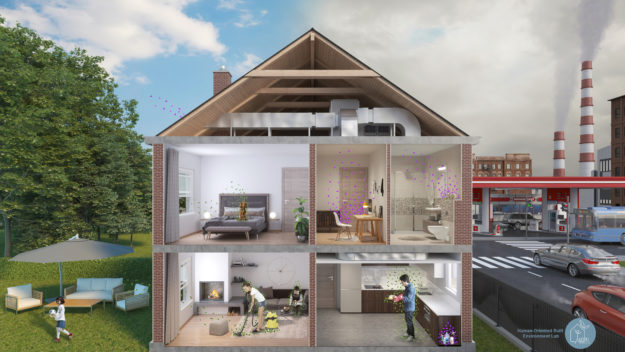Elucidation of sources and dynamics of air pollution in indoor and urban environments in Fairbanks, Alaska
Wintertime air pollution is a serious problem for indoor and urban areas and areas affected by industrial activities in the Arctic and sub-Arctic regions. The cause of this pollution is local emissions coupled with poor dispersion caused by strong temperature inversions. However, many uncertainties remain in understanding the physical and chemical processes driving this pollution. In the case of Fairbanks, Alaska, fine particulate matter (PM2.5) concentrations exceed health-based pollution thresholds, requiring action to mitigate this problem.
This particulate matter comes from a mix of outdoor and indoor sources Prior Fairbanks studies have shown that wood combustion is the largest single source, but other sources also contribute. Progress on this problem requires research into source apportionment and a better understanding of chemical processing of pollution during cold and dark conditions. A dozen researchers from around the world work on the ALPACA study, which is organized under the international PACES initiative and in coordination with the Pan Eurasian Experiment (PEEX). ALPACA investigates emissions and chemical and meteorological influences on indoor and outdoor pollution in Fairbanks.
HOBEL is involved in indoor experiments in which researchers will probe the influence of pellet stoves, air filtration and cooking activities on particle emissions and their transformation in indoor air. In addition to measurements, modeling, laboratory, and health effect studies, outreach efforts are planned. The intended outcomes of ALPACA are and improved mechanistic understanding of pollution behavior in Nordic conditions, greater public awareness of the problem, and better-informed pollution mitigation strategies.
